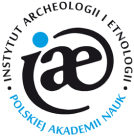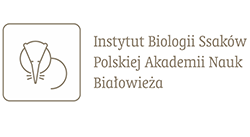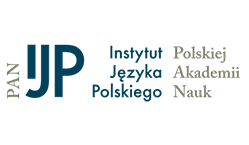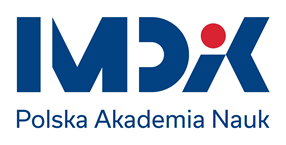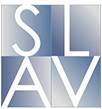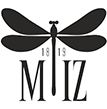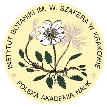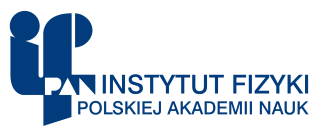- Wyszukaj w całym Repozytorium
- Piśmiennictwo i mapy
- Archeologia
- Baza Młynów
- Nauki przyrodnicze
Wyszukiwanie zaawansowane
Wyszukiwanie zaawansowane
Wyszukiwanie zaawansowane
Wyszukiwanie zaawansowane
Wyszukiwanie zaawansowane

Obiekt
Tytuł: Three Publications about Archaeology of a Segment of the First World War's Forgotten Eastern Front: Zalewska, A. I. (ed.), Archeologiczne Przywracanie Pamięci o Wielkiej Wojnie w rejonie Rawki i Bzury (1914–1915), Warszawa 2019; Zalewska, A.I., Czarnecki, J. and Kiarszys, G., Krajobraz Wielkiej Wojny: Front nad Rawką i Bzurą (1914–15) w świetle teledetekcji archeologicznej i źródeł historycznych, Warszawa 2019; Zalewska, A. I. (ed.), Archeologia Frontu Wschodniego Wielkiej Wojny i dziedzictwo konfliktów zbrojnych jako wyzwanie poznawcze, społeczne i konserwatorskie, Lublin 2021: [recenzja]
Inny tytuł:
Archaeologia Polona Vol. 59 (2021)
Wydawca:
Institute of Archaeology and Ethnology Polish Academy of Sciences
Miejsce wydania:
Opis:
Typ obiektu:
Abstrakt:
While the horrors of the trench warfare on the Western Front in Belgium and France are part of the European cultural memory, to some degree the much more extensive and mobile Eastern Front of the 1914–1918 conflict has become the forgotten front (Die vergessene Front). Although for just over eleven months in 1914/15, the central part of a major front, some 1000 km long on which three million people died ran through the middle of what is now Poland, for a number of reasons the memory of this has there been all but erased from memory and from the cultural landscape.The reviewed three volumes are the result of a project that has attempted to address the poor state of historical memory of the momentous events and human drama that took place a century earlier on the segment of the front, 55 km west of Warsaw. Here, from mid-December 1914, the Russian Imperial army tried to hold back the eastward advance of the German troops on defences built along the Bzura and Rawka rivers. For the next seven months, the fighting here took the form of the same type of prolonged static trench warfare more familiar on the Western Front (the only place in the eastern sphere of war that this happened). The German army made every effort (including mining and several major gas attacks), to advance on Warsaw but failed to break through. It was only after the Great Retreat of the Russian army in the summer of 1915 that these defences were overrun and Warsaw fell
Bibliografia:
Zalewska, A. I. (ed.). 2019. Archeologiczne Przywracanie Pamięci o Wielkiej Wojnie w rejonie Rawki i Bzury (1914–1915). Warszawa
Zalewska, A.I., Czarnecki, J. and Kiarszys, G. 2019. Krajobraz Wielkiej Wojny: Front nad Rawką i Bzurą (1914–15) w świetle teledetekcji archeologicznej i źródeł historycznych. Warszawa
Zalewska, A. I. (ed.).2021. Archeologia Frontu Wschodniego Wielkiej Wojny i dziedzictwo konfliktów zbrojnych jako wyzwanie poznawcze, społeczne i konserwatorskie. Lublin
Czasopismo/Seria/cykl:
Tom:
Strona pocz.:
Strona końc.:
Szczegółowy typ zasobu:
Format:
Identyfikator zasobu:
oai:rcin.org.pl:235424 ; 0066-5924 ; doi:10.23858/APa59.2021.2869
Źródło:
IAiE PAN, sygn. P 357 ; IAiE PAN, sygn. P 358 ; IAiE PAN, sygn. P 356 ; kliknij tutaj, żeby przejść
Język:
Prawa:
Licencja Creative Commons Uznanie autorstwa 4.0
Zasady wykorzystania:
Zasób chroniony prawem autorskim. [CC BY 4.0 Międzynarodowe] Korzystanie dozwolone zgodnie z licencją Creative Commons Uznanie autorstwa 4.0, której pełne postanowienia dostępne są pod adresem: ; -
Digitalizacja:
Instytut Archeologii i Etnologii Polskiej Akademii Nauk
Lokalizacja oryginału:
Biblioteka Instytutu Archeologii i Etnologii PAN
Dostęp:
Kolekcje, do których przypisany jest obiekt:
- Repozytorium Cyfrowe Instytutów Naukowych > Kolekcje Partnerów > Instytut Archeologii i Etnologii PAN > Publikacje Pracowników i Wydawnictwa IAE PAN
- Repozytorium Cyfrowe Instytutów Naukowych > Kolekcje Partnerów > Instytut Archeologii i Etnologii PAN > Publikacje Pracowników i Wydawnictwa IAE PAN > Czasopisma bieżące
- Repozytorium Cyfrowe Instytutów Naukowych > Piśmiennictwo > Czasopisma/Artykuły
- Repozytorium Cyfrowe Instytutów Naukowych > Kolekcje Partnerów > Instytut Archeologii i Etnologii PAN > Publikacje Pracowników i Wydawnictwa IAE PAN > Czasopisma bieżące > Archaeologia Polona
Data ostatniej modyfikacji:
3 mar 2023
Data dodania obiektu:
5 cze 2022
Liczba pobrań / odtworzeń:
113
Wszystkie dostępne wersje tego obiektu:
https://rcin.org.pl./publication/270346
Wyświetl opis w formacie RDF:
Wyświetl opis w formacie RDFa:
Wyświetl opis w formacie OAI-PMH:
Obiekty Podobne
Vojtas, Martin Těsnohlídek, Jakub Prišťáková, Michaela Petřík, Jan Fojtík, Martin Zubalík, Jiří Kapavík, Radim Tajkov, Peter
Kobiałka, Dawid Pawleta, Michał Karski, Kamil
Bitušíková, Alexandra
Tidemann, cr Vardon, M. J. Loughland, R. A. Blocklehurst, P. J.
Markiewicz, Małgorzata
Barford, Paul M.
Barford, Paul M.
Bulyk, Natalia Berest, Roman Tomeniuk, Olena

 INSTYTUT ARCHEOLOGII I ETNOLOGII POLSKIEJ AKADEMII NAUK
INSTYTUT ARCHEOLOGII I ETNOLOGII POLSKIEJ AKADEMII NAUK
 INSTYTUT BADAŃ LITERACKICH POLSKIEJ AKADEMII NAUK
INSTYTUT BADAŃ LITERACKICH POLSKIEJ AKADEMII NAUK
 INSTYTUT BADAWCZY LEŚNICTWA
INSTYTUT BADAWCZY LEŚNICTWA
 INSTYTUT BIOLOGII DOŚWIADCZALNEJ IM. MARCELEGO NENCKIEGO POLSKIEJ AKADEMII NAUK
INSTYTUT BIOLOGII DOŚWIADCZALNEJ IM. MARCELEGO NENCKIEGO POLSKIEJ AKADEMII NAUK
 INSTYTUT BIOLOGII SSAKÓW POLSKIEJ AKADEMII NAUK
INSTYTUT BIOLOGII SSAKÓW POLSKIEJ AKADEMII NAUK
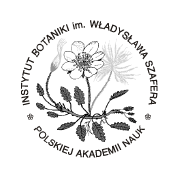 INSTYTUT CHEMII FIZYCZNEJ PAN
INSTYTUT CHEMII FIZYCZNEJ PAN
 INSTYTUT CHEMII ORGANICZNEJ PAN
INSTYTUT CHEMII ORGANICZNEJ PAN
 INSTYTUT FILOZOFII I SOCJOLOGII PAN
INSTYTUT FILOZOFII I SOCJOLOGII PAN
 INSTYTUT GEOGRAFII I PRZESTRZENNEGO ZAGOSPODAROWANIA PAN
INSTYTUT GEOGRAFII I PRZESTRZENNEGO ZAGOSPODAROWANIA PAN
 INSTYTUT HISTORII im. TADEUSZA MANTEUFFLA POLSKIEJ AKADEMII NAUK
INSTYTUT HISTORII im. TADEUSZA MANTEUFFLA POLSKIEJ AKADEMII NAUK
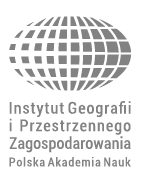 INSTYTUT JĘZYKA POLSKIEGO POLSKIEJ AKADEMII NAUK
INSTYTUT JĘZYKA POLSKIEGO POLSKIEJ AKADEMII NAUK
 INSTYTUT MATEMATYCZNY PAN
INSTYTUT MATEMATYCZNY PAN
 INSTYTUT MEDYCYNY DOŚWIADCZALNEJ I KLINICZNEJ IM.MIROSŁAWA MOSSAKOWSKIEGO POLSKIEJ AKADEMII NAUK
INSTYTUT MEDYCYNY DOŚWIADCZALNEJ I KLINICZNEJ IM.MIROSŁAWA MOSSAKOWSKIEGO POLSKIEJ AKADEMII NAUK
 INSTYTUT PODSTAWOWYCH PROBLEMÓW TECHNIKI PAN
INSTYTUT PODSTAWOWYCH PROBLEMÓW TECHNIKI PAN
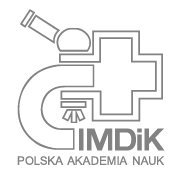 INSTYTUT SLAWISTYKI PAN
INSTYTUT SLAWISTYKI PAN
 SIEĆ BADAWCZA ŁUKASIEWICZ - INSTYTUT TECHNOLOGII MATERIAŁÓW ELEKTRONICZNYCH
SIEĆ BADAWCZA ŁUKASIEWICZ - INSTYTUT TECHNOLOGII MATERIAŁÓW ELEKTRONICZNYCH
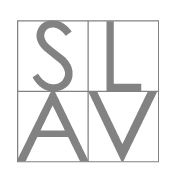 MUZEUM I INSTYTUT ZOOLOGII POLSKIEJ AKADEMII NAUK
MUZEUM I INSTYTUT ZOOLOGII POLSKIEJ AKADEMII NAUK
 INSTYTUT BADAŃ SYSTEMOWYCH PAN
INSTYTUT BADAŃ SYSTEMOWYCH PAN
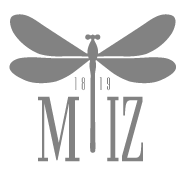 INSTYTUT BOTANIKI IM. WŁADYSŁAWA SZAFERA POLSKIEJ AKADEMII NAUK
INSTYTUT BOTANIKI IM. WŁADYSŁAWA SZAFERA POLSKIEJ AKADEMII NAUK
![Three Publications about Archaeology of a Segment of the First World War's Forgotten Eastern Front: Zalewska, A. I. (ed.), Archeologiczne Przywracanie Pamięci o Wielkiej Wojnie w rejonie Rawki i Bzury (1914–1915), Warszawa 2019; Zalewska, A.I., Czarnecki, J. and Kiarszys, G., Krajobraz Wielkiej Wojny: Front nad Rawką i Bzurą (1914–15) w świetle teledetekcji archeologicznej i źródeł historycznych, Warszawa 2019; Zalewska, A. I. (ed.), Archeologia Frontu Wschodniego Wielkiej Wojny i dziedzictwo konfliktów zbrojnych jako wyzwanie poznawcze, społeczne i konserwatorskie, Lublin 2021: [recenzja]](https://rcin.org.pl./image/edition/thumbnail:docmetadata/235424)







